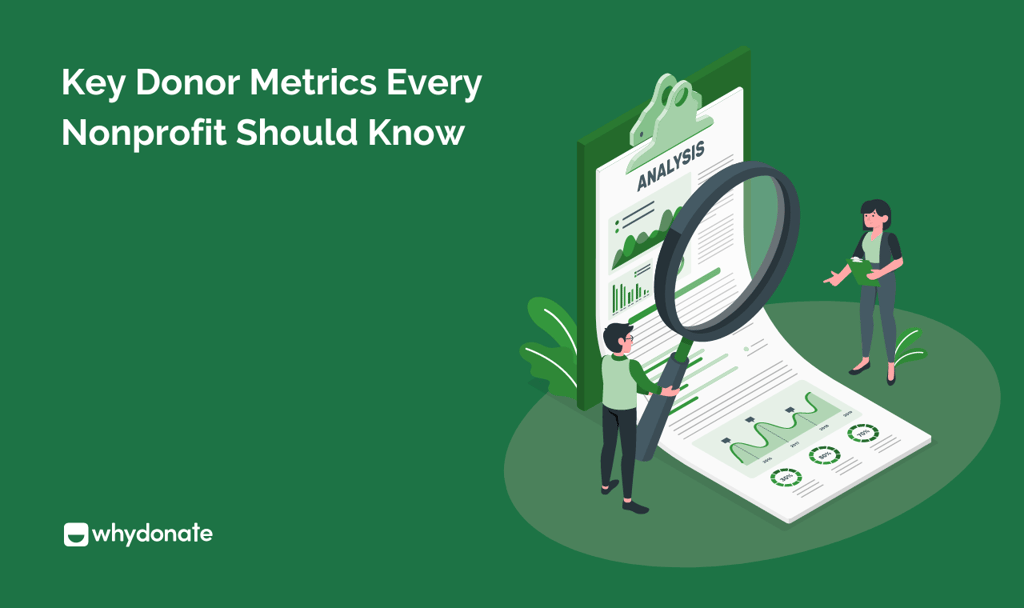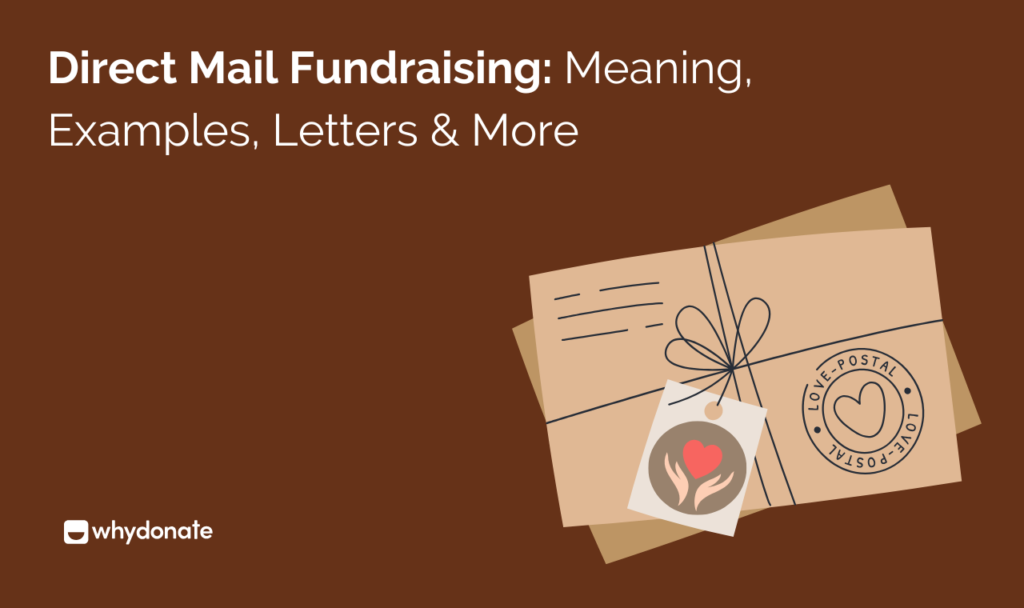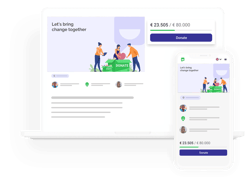As someone raising funds from donors, it becomes crucial to know how your funds are being driven, who your donors are, what makes them donate, what they think about your project, etc. Donors are the most significant part of any fundraising program. With them, you can imagine growth and funds in your project. Now, there are many donor metrics involved in fundraising. We will highlight the major ones to help you operate your donations and lead a successful fundraising program.
- Attract Thousands Of Supporters And Use The Top Donor Metrics With WhyDonate. Start A Campaign For Free!
Table of Contents
What Are Donor Metrics?
Donor metrics are all about your donors and knowing them better on various grounds, such as their demographics, donor survey responses, retention, and many more things, which may directly or indirectly impact your fundraising practices. More broadly, it’s about figuring out what brings your funds and takes them down.

9 Essential Donor Metrics You Must Know
Here’s your list of donor metrics that you need to know to evaluate the functioning of your fundraising practices:
1. Donor Acquisition Rate
Donor acquisition refers to acquiring new donors. Keep a track record of your donor acquisition rate, as it greatly matters. From here, you get to know how well your fundraising is functioning. A high donor acquisition rate is a sign of ‘’ongoing’. However, if the results are the opposite, this part certainly needs some action and attention. Welcoming new donors is a big help for your fundraising efforts.
2. Average Gift Size
Average gift size refers to the amount of donation you receive from your donors in a specific period or event. It may be a period of a year, six months, or any particular event. This assists you in finding out whether your funds are increasing, decreasing, or running on a constant level. You can use this donor metric for the betterment of your fundraising team, where you need to put more effort and to help you increase your average gift size by improving necessary factors.
3. Donor Demographics
To get to know your donor, try personalizing it to some level, like knowing their location, profession, age, gender, etc. Following this, you will get to know your most or the least paying and interested audience in the sector. This will help you get into your donors’ lives and where you are earning the primary source of your donations. This is undoubtedly a remarkable donor metric to consider when raising funds on an online platform.
4. Donor Retention
There is a thin line between donor acquisition and donor retention. Donor acquisition is getting new potential donors, whereas donor retention describes how many donors are continuing to donate or add funds to your project. It tells you about the number of donors your organization retains every year. Here, you must keep your retention rate as high as possible to fundraise efficiently and get fruitful results.
5. Donor Survey Responses
Holding a survey to know what is on your donors’ heads is beneficial. It boosts the cordial relations between the giver and taker. Through donor survey responses, you can ask for your donors’ opinions, individual perspectives, positive or negative feedback, etc. The honest responses from the donors will provide you with a list of areas where you need to work more and how you need to catch up. Regular and timely surveys are a big help in knowing precisely about your donors and their thoughts.
6. Reactivated Donors
Reactivated donors are those you once used to donate but later stopped abruptly, and subsequently, they again joined your campaign. If you notice the higher number of reactivated donors, then congratulations, you are on the right path. It signifies that people actually find value in donating to your project. This is undoubtedly an essential point to be tracked from time to time. Always try to keep your donors activated and understand their worth.
7. Upgraded Donors
Now, this is also a noteworthy component to highlight. Upgraded donors tell you about their upgraded status, whether financially, economically, or socially. It also lets you know about new donors and participation in the fundraising program who are willing to pay for your project. Keeping a healthy record of your donors or audience is entirely operative and contributes to taking your funds to greater lengths and increasing the benefits.
8. Gains/Losses Of Donors
Gains and losses of donors have a direct impact on your funds. This is an obvious rule that the larger the number of donors, the larger the gains. The more donors you earn, the more funds you receive. If you lose your donors, your funds will automatically go down. Thus, you need to be considerate of the gains and losses of your donors, and it’s better to keep a check after a certain period of time. This attribute will help you evaluate your work’s performance or effectiveness.
9. Lapsed Donors
Lapsed donors slow down the engagement and funding of your project. The lapsed donors rate tells you the number of donors who were not retained over a year. This clearly indicates poor and inefficient performance, which needs to be tackled as soon as possible. Here, you should re-evaluate your functions and efforts to restore the loss. This is one of the notable donor metrics to consider in order to maximize the results.

Wrapping Up!
Donor metrics are a method to build a sustainable and robust connection with your donors. You must always know these basic donor metrics to stay caught up in some areas. Analyzing and working on donor metrics positively boosts your performance and results.
An ideal platform for fundraising and using all the key donor metrics can together result in highly successful fundraising practices. So, if you want to grow your donations limitlessly and acquire stability in your fundraising efforts, we highly recommend you take the necessary actions regarding donor metrics and choose an ideal online platform like WhyDonate.
Utilize fundraising metrics to analyze your progress and advance your mission. Start a campaign with WhyDonate today!
FAQs (Frequently Asked Questions)
Why nonprofit donor metrics are so important?
Nonprofit donor metrics provide nonprofits with an invaluable way of measuring fundraising success, tracking donor behavior, and optimizing outreach strategies. Metrics provide insight into donor retention, acquisition, and overall campaign performance, giving nonprofits guidance in building stronger relationships while instilling trust in supporters.
How do you measure donor engagement?
Donor engagement can be measured using different indicators such as average gift size, volunteer participation rates, event attendance rates, and communication responsiveness. Analyzing such indicators provides nonprofits with invaluable insight into supporters’ levels of involvement.
How do you analyze donor data?
An analysis of donor data involves reviewing contribution patterns, demographic information, and engagement metrics in great depth. This allows nonprofit organizations to quickly spot trends among donors, segment their donor pool, and tailor fundraising strategies accordingly for maximum impactful campaigns.
What is KPI in fundraising metrics?
Key Performance Indicators (KPIs) in fundraising represent quantifiable measures of its success, often including donation amounts, donor retention rates, and acquisition costs as fundraising metrics of KPI success. KPIs help nonprofit organizations set goals, evaluate performance, and refine strategies, ultimately leading to long-term and impactful fundraising results.
Enhance your campaign’s performance by monitoring essential fundraising metrics. Launch a campaign now!

















